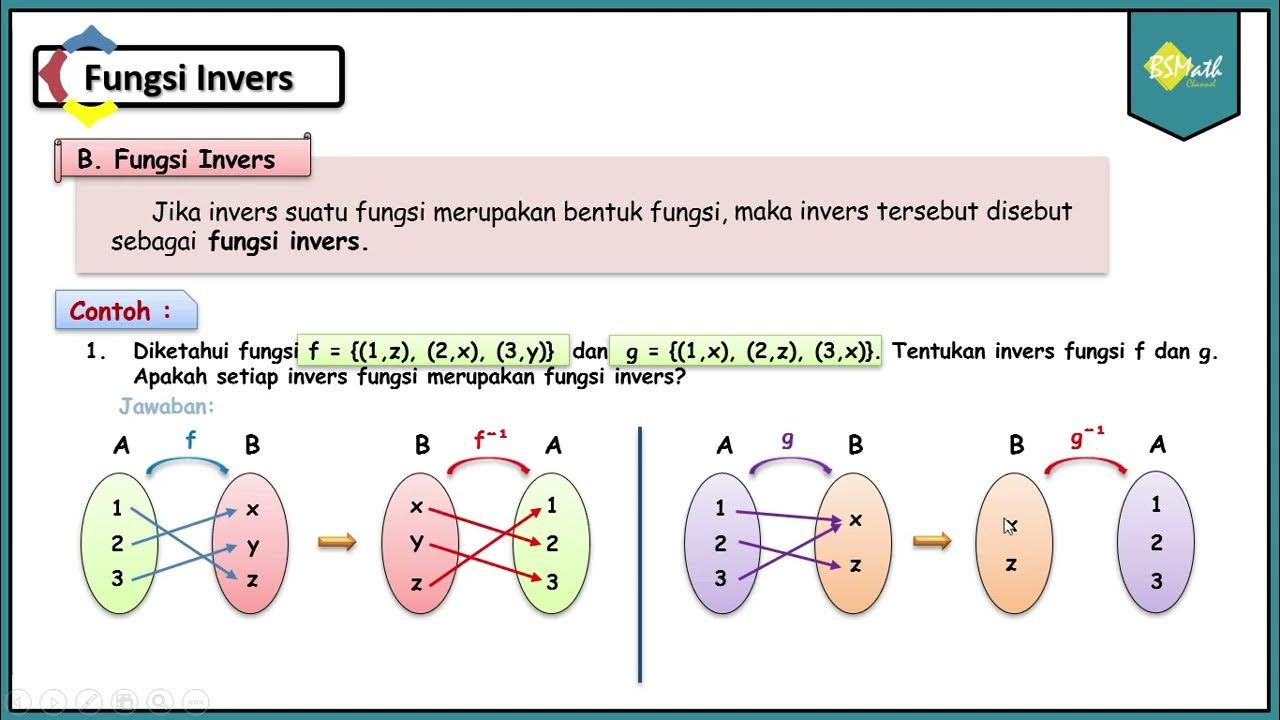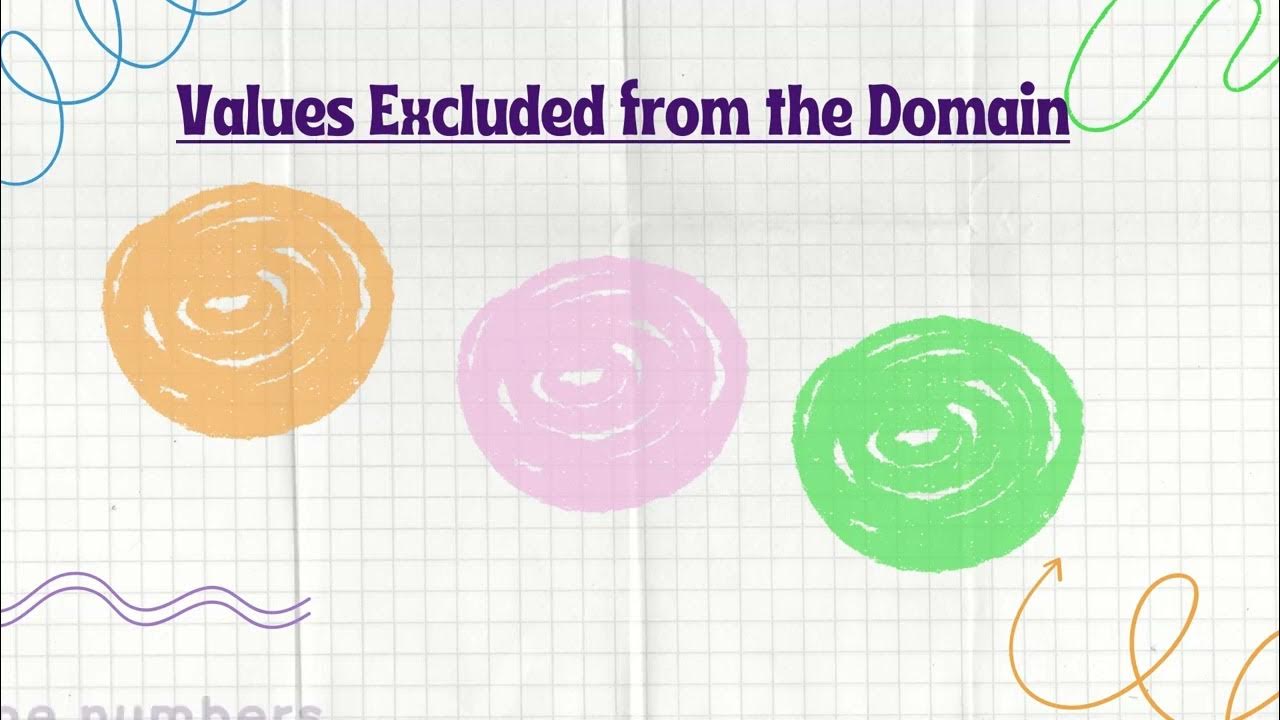INVERSE OF ONE-TO-ONE FUNCTIONS || GRADE 11 GENERAL MATHEMATICS Q1
Summary
TLDRThis video script explains the concept of inverse functions in mathematics. It covers the criteria for a function to have an inverse, including being one-to-one, and demonstrates how to find the inverse of various functions through examples. It also discusses when a function does not have an inverse, such as quadratic functions, and concludes with a problem-solving example converting temperatures between Fahrenheit and Kelvin.
Takeaways
- 🔄 The inverse of a function reverses the input and output, swapping the domain and range of the original function.
- 📉 A function has an inverse if and only if it is one-to-one, meaning each output corresponds to exactly one input.
- 📚 To find the inverse of a function, you interchange x and y, then solve for y in terms of x.
- 📐 The horizontal line test can be used to determine if a function is one-to-one; if any horizontal line intersects the graph more than once, it's not one-to-one.
- 🔢 For a function like y = 2x - 1, substituting values into the function and then reversing the x and y values helps find the inverse.
- ✅ Examples are given to illustrate finding inverses, such as y = 3x + 1 leading to an inverse of y = (x - 1) / 3.
- 📉 Quadratic functions are not one-to-one because their graphs are parabolas that do not pass the horizontal line test.
- 🔢 The absolute value function, like f(x) = |3x|, also fails the horizontal line test and thus does not have an inverse.
- 🌡 Converting temperature scales involves understanding inverse functions, such as converting from Fahrenheit to Kelvin and vice versa.
- ❌ Not all functions have inverses; if a function fails the horizontal line test, it does not have an inverse function.
- 🔄 To check if two functions are inverses, you can use function composition (f(g(x)) should equal x, and g(f(x)) should also equal x).
Q & A
What is the definition of an inverse function?
-An inverse function reverses the effect of the original function. If a function f performs a certain operation on x to produce y, then the inverse function undoes that operation to get back to x.
How is the domain and range of a function related to its inverse?
-The domain of the inverse function is the range of the original function, and the range of the inverse function is the domain of the original function.
What is the process of finding the inverse of a function?
-To find the inverse of a function, you first write the function in the form y = f(x), then interchange x and y, and finally solve for y in terms of x.
What is the condition for a function to have an inverse?
-A function has an inverse if and only if it is one-to-one, meaning each input is mapped to exactly one output.
How do you determine if a function is one-to-one?
-You can determine if a function is one-to-one by using the horizontal line test. If no horizontal line intersects the graph of the function more than once, then the function is one-to-one.
What is the inverse of the function f(x) = 2x - 1?
-The inverse of the function f(x) = 2x - 1 is f^(-1)(x) = (x + 1) / 2.
How do you find the inverse of a function given by a set of ordered pairs?
-To find the inverse of a function given by a set of ordered pairs, you swap the x and y values of each pair.
What is the inverse of the function g(x) = x^3 - 2?
-The inverse of the function g(x) = x^3 - 2 is g^(-1)(x) = (x + 2)^(1/3).
Why can't a quadratic function have an inverse?
-A quadratic function cannot have an inverse because it fails the horizontal line test. A parabola intersects any horizontal line at most once, but an inverse function requires a unique input for each output.
How do you convert a temperature from Kelvin to Fahrenheit using the inverse function?
-To convert a temperature from Kelvin to Fahrenheit, you use the inverse function: F = (K - 273.15) * (9/5) + 32.
How can you check if two functions are inverses of each other?
-You can check if two functions are inverses of each other by composing them and seeing if the result is the identity function, which leaves the input unchanged.
Outlines

This section is available to paid users only. Please upgrade to access this part.
Upgrade NowMindmap

This section is available to paid users only. Please upgrade to access this part.
Upgrade NowKeywords

This section is available to paid users only. Please upgrade to access this part.
Upgrade NowHighlights

This section is available to paid users only. Please upgrade to access this part.
Upgrade NowTranscripts

This section is available to paid users only. Please upgrade to access this part.
Upgrade NowBrowse More Related Video

Fungsi Invers - Matematika SMA Kelas XI Kurikulum Merdeka

Fungsi Invers Part 1 ||Materi, Soal & Pembahasan||

Komposisi Fungsi Part 3 - Fungsi invers dan Sifat-sifatnya [ Matematika Wajib Kelas X ]

Functions

FUNÇÃO INVERSA | DEFINIÇÃO, LEI DE FORMAÇÃO, DIAGRAMA E EXERCÍCIOS | Ensino médio - Gis com Giz

Pembahasan materi FUNGSI (Domain & Range, Komposisi, Invers) KELAS 10 | #MatematikAsik
5.0 / 5 (0 votes)